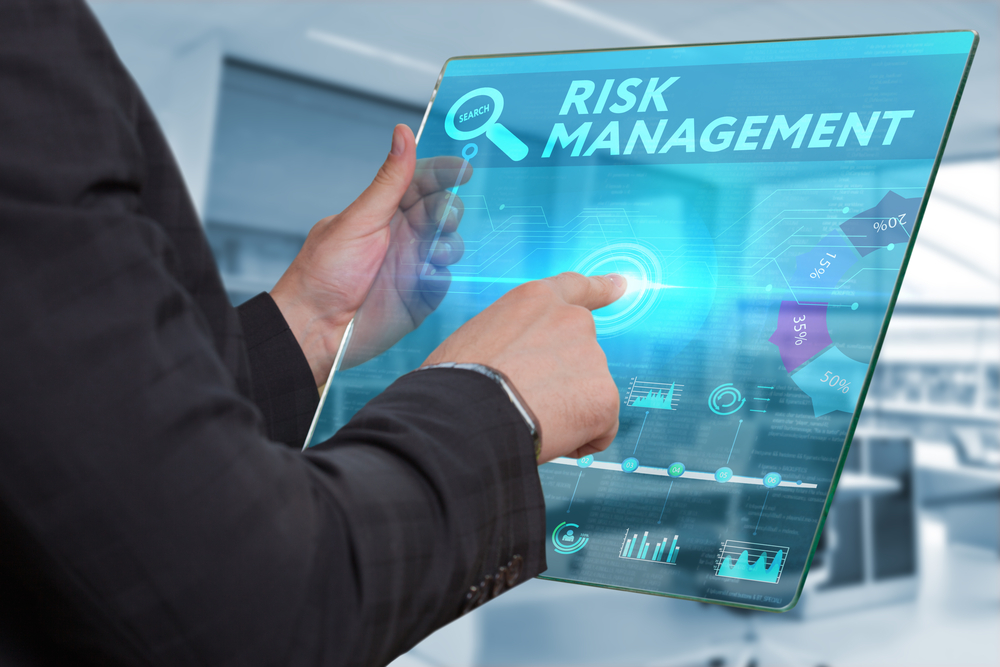
by Desislava Wood | Nov 2, 2020 | Trondent Blog
Your travelers are anxious to get back out in front of their customers but you still have concerns. A comprehensive travel policy and approval platform is vital – not just for budget compliance but to ensure your travelers are safe and instill confidence in your travel program. Travel policies are becoming increasingly complex and fluid, which puts a lot of pressure on you to ensure the correct approval process is in place.
Now is the time to reconsider your approval platform – here are four reasons why:
1 OK to Travel but Travel Safely
Slowly you are allowing your travelers to venture out. But, are they putting themselves in danger? Traveler safety is top of mind for organizations but everyone manages it a little differently. Trondent’s approval platform allows you to implement the security elements and evaluation process which best fits your objectives. Whether you are developing your own hot-spot ranking or using a risk management provider, Trondent’s Authorizer AI incorporates relevant risk data into your approval process. We integrate with your risk management provider to include country security, health ratings, and current outbreak data for every trip request. Not using a risk management partner? No problem. Authorizer AI can use your internal security rankings as part of the trip evaluation.
Approvers and security teams are alerted to any trip with an elevated risk factor – ensuring everyone feels more confident in upcoming travel. Our Artificial Intelligence-driven engine can also calculate a risk score for each trip request based on company-defined risk factors. This risk score can be incorporated into both automated and manual trip approval processes.
2 Travel with Confidence
Travelers might be excited to get back in front of their customers but how do they actually FEEL about traveling? Your organization is concerned as well. Travelers will feel more confident if they know their organization considered all the risks prior to approving a trip. Confident travelers also have access to the most up-to-date safety information – ensuring they are aware of requirements, screenings, and local regulations.
To mitigate corporate risk further, your executive team may want to capture the travelers’ official travel consent. Authorizer AI’s robust functionality includes an Attestation Email providing travelers with the latest information on their trip with links to all internal company travel resources. Before the trip is forwarded for manager approval, travelers ascertain that they read all pertinent information and are able and willing to travel. Leveraging artificial intelligence helps simplify the complexities of the approval process for all involved – travelers, approvers, travel managers, and travel agents, while optimizing its efficiency.
3 One Policy Does Not Fit All
Your travel policy is as unique as your organization. While essential travel is still essential, it now comes with a burden of new requirements and considerations. Your policies may vary based on traveler type, trip purpose and destination, or can vary by region. A travel policy that considers all these variables and more, is bound to be complex and require multiple levels of approval. One policy will definitely not fit all and neither should your trip approval platform.
You need a flexible and comprehensive solution customized to your organization’s unique travel needs. Complex policies include numerous dependencies to determine if a trip should be approved or declined. Manual review of these variables delays approvals, costs the company a significant amount of time and budget, and lacks consistency and accuracy. By leveraging Authorizer AI’s artificial intelligence engine, you can fully customize your approval process, create numerous workflows designed to minimize manual reviews and approvals, and assure a consistent and streamlined approach. When trip requests deviate from policy to an unacceptable level and human evaluation is required, Authorizer AI alerts approvers on the specific trip elements needing review or consideration. In addition, it provides approvers with other important information – such as available budgets –in real-time information, thus improving the speed and accuracy of the decision process. Trips, meeting corporate travel policies, are approved automatically – no need to burden approvers to review and act on every trip when a simple notification can be sufficient.
Vital to any successful travel program is the ability to review and act on historic data. You need to understand the violations that occur the most, who makes those violations, and address issues accordingly. Authorizer AI provides a number of standard real-time reports providing data on PNR status, missed savings, decision duration, decisions reached on timeout, out of policy trips and more while detailed Scorecard Reports include information on the booking and approval performance of each traveler and approver. You can schedule standard reports or run them as needed. Custom reporting is available to address any unique requirements. The reports provide insight into the behavior of your travelers, approvers, and the organization as a whole – allowing you to make well-informed and timely adjustments and elevate the efficiency of your program.
4 The Need for Scalability
With limited travel and while in the middle of a pandemic, your current approval process might work today. But, as more and more return to travel, the number of requests will significantly increase. Likewise, the complexity of variables in your policy can increase and change on a daily basis.
Authorizer AI allows you to easily and efficiently meet any increase in demand or change in travel policy. It is not practical to rely on approvers to stay up to date on policy restrictions. Leveraging artificial intelligence, Authorizer AI automates the approval process, while requiring managers to only act on requests deviating from policy at an unacceptable level. Authorizer AI is able to handle even the most complex travel policies and approval processes – making travel manageable again, and, since it’s is compatible with all GDS’s, OBT’s and TMC’s, allows you to implement one trip approval solution globally for a seamless experience and consistent outcomes. The platform is highly agile and gives you more control by implementing your policy changes quickly and as often as needed which results in improved accuracy, consistency, and overall efficiency and satisfaction for your travel program.
Returning to travel will not be an easy path for many organizations. You need to manage new restrictions and ensure traveler safety. The transitional period allows you the time to focus on your overall travel policies and processes. Now is the time to act and get ready to meet the challenges of the new normal as travel picks up again.
Contact Us Today to Get Started

by Dave Stevenson | Jun 16, 2020 | Trondent Blog
As your employees go back to the office and resume corporate travel, it is critical for organizations to prioritize their business travelers’ safety. They must find new ways to mitigate risk and control travel spend in the post-Coronavirus era.
It is also important that organizations effectively communicate changing travel policy to those affected in a quick and efficient way. Once your company defines what “permissible travel” looks like, an automated pre-trip authorization platform can help you manage essential business travel.
Business Trip Reason
 One of the most important factors in determining whether a business trip should be approved or declined its purpose. Trondent’s pre-trip authorization platform, Authorizer AI, has the capability to create different trip workflows based on a variety of trip purposes. Trondent cross references the trip’s reason and all other PNR details against your company’s travel policy and permissible purposes. If it meets your company’s requirements, the trip is automatically approved without any manual oversight or time spent.
One of the most important factors in determining whether a business trip should be approved or declined its purpose. Trondent’s pre-trip authorization platform, Authorizer AI, has the capability to create different trip workflows based on a variety of trip purposes. Trondent cross references the trip’s reason and all other PNR details against your company’s travel policy and permissible purposes. If it meets your company’s requirements, the trip is automatically approved without any manual oversight or time spent.
If the purpose for the trip isn’t quite essential, the approving manager would receive an email that contains the trip details, including its reason and any other out-of-policy selections. By giving the approver all of this information, they are able to make a quick, well-informed decision on whether the business reservation should get ticketed. The Approve or Decline button is conveniently embedded directly in the approver’s email message so they can make their decision right from their email without logging in to any system or platform.
Risk Management Data
This is crucial. Trondent can integrate with your Risk Management provider (or work with one of our risk management partners) to include risk management data like country, security and health ratings, COVID-19 data or open border information into your pre-trip approval process. This way, your travelers and managing approvers stay on top of the latest developments occuring at their destination and layover countries. Potential issues are identified before the trip is ticketed.
Traveler Consent/Attestation Form
Corporations concerned about travelers’ risk and well-being may wish to obtain written traveler consent as part of the trip approval process. This would serve as confirmation that the traveler is comfortable traveling,  and well enough to do so, while also helping mitigate overall corporate risk.
and well enough to do so, while also helping mitigate overall corporate risk.
The itinerary would be sent to the traveler for consent before it gets forwarded to the appropriate approvers. Links to your current travel policy and requirements are embedded into the email to assure that the traveler can familiarize themselves and comply with it.
 Calculated Travel Risk Score
Calculated Travel Risk Score
Our Artificial Intelligence-driven engine calculates a “risk score” for each trip request based on your company-defined criteria and risk factors. It can be utilized in both automated and manual trip approval processes. This score indicates a veritable “pain-threshold” of potential risk associated with a business trip based on where it’s going and any threat variables associated with it.
Minimize Financial Risk
While expense platforms report unnecessary and excessive spend data after the fact, Authorizer AI helps you identify such spend before it occurs. This way, you can catch excessive spending before the trip is ticketed and recoup loss that would otherwise be incurred by company. These trip requests are forwarded for manual review by the appropriate, managing approver.
Given all of these reasons, we encourage you to let Trondent help strengthen your travel program with our advanced pre-trip authorization solution. Contact Trondent today to learn more.

by Dave Stevenson | Mar 25, 2020 | Trondent Blog
Shortly before the new year, the business forecast was less than sunny yet not in danger of full-fledged recession. The political scene was chaotic. Economic factors spiraled out of control with a trade war between the United States and China and the fate of Brexit still up in the air. Add that to the shifting dynamic of the workforce thanks to millennial employees, and talk of a recession was growing.
Enter 2020. No one could’ve seen it coming (save for the scientists who’ve been warning us for decades). The Coronavirus – COVID 19, has affected all levels of business, not just its travelers. The hospitality industry has been profoundly wounded by the loss of business the past couple months, and the end is not yet in sight. Now is the critical time for companies to prepare for a looming travel recession.
It requires a multifaceted approach. While various measures to save money can be implemented, one of the first places to look is the travel budget. If you are looking to prepare your travel department for hard times ahead or simply want to increase savings for your corporation, then here are some cost-saving measures for your business travel program.
Clarify Your Corporate Travel Policy
One reason that travel expenses balloon out of control for most businesses can be traced to a lack of clarity around travel policy. Basically, most companies fail to develop a clear policy for travelers to refer to when arranging travel plans.
A concise travel policy should include detailed information on booking flights, meal allowances, hotel and ground transportation costs and any extraneous expenditures, as well as instructions on how to handle extraordinary circumstances like the recent viral outbreak. The policy should explain procedures for getting costs approved while outlining how expenses are processed.
The more specific you are, the less room for error. Create a policy that standardizes the approval process while setting clear guidelines. This helps keep employees on budget, and it also prevents employees from booking expensive trips without approval.
Pre-Trip Approval
For greater cost savings, invest in an automated pre-trip approval software like Authorizer PRO which optimizes the trip approval process and serves as a tool to control various travel costs. An advanced pre-trip approval software helps facilitate company policy compliance and high level of efficiency in the approval process.
The system monitors policy rules such as advance purchase, air, hotel and car rates, preferred vendor and seat selection, etc. and allows for the application of various policy rules based on traveler type, flight length, cost center, etc. The use of these advanced rule types, as well as the ability to minimize the need for manual approval, provide companies with ability to implement the most effective policy and process and secure significant savings in result.
Recovering Unused Airline Tickets
It is unfortunate, but true, that business travelers often change itineraries after booking. This can cost companies up to 20% of total travel spend. Non-refundable tickets tend to be cheaper upfront than flexible tickets which can cost nearly four times as much. Unused airline tickets usually cannot be donated or transferred, and expire within a year.
That is why monitoring unused tickets and utilizing it as soon as possible is an essential tool in controlling travel costs. Utilizing an e-ticket recovery platform like eTRAK PRO helps corporations recover most of the ticket value which would otherwise be lost.
Pre-trip notifications remind the traveler of the upcoming trip so they have a chance to make any necessary changes early. Identified unused tickets are posted to the traveler’s profile making it easy to identify who has unused ticket segments left in order to redeem or exchange them upon said traveler’s next business trip. Unlike GDS’s, eTRAK monitors unused tickets for a full year and alerts of tickets expiring in the near future. So if you don’t currently have a tool to keep track of unused tickets, we highly suggest you implement one.
Be Smart About Airfare
Set guidelines that require travelers to fly Economy, especially on short flights. You can set seat type restrictions based on trip length and traveler type. Restrict access to flexible tickets and encourage employees to book tickets on less expensive days whenever possible.
In business, last-minute travel is often unavoidable. As soon as you know about a trip, start booking it. Costs like airfare, hotel fees and more are all much lower when you book in advance. In fact, the prices can skyrocket at the last minute, exponentially impacting your travel budget.
Advance purchase options are ideal because they allow travelers to book and pay at a discounted rate so long as the ticket is issued a certain number of days before departure or within a fixed time from the date of booking. This can be determined in your contract negotiation with preferred carriers.
Save Money on Hotels
In the face of a recession, travel managers can re-evaluate existing vendor contracts as well as established contracts with new, preferred vendors to secure rates that will help the corporation maintain budgeted spending.
By promoting the use of those preferred vendor programs through your travel policy and pre-trip approval process, employees know what hotel chains they should book to redeem special corporate rates. Be sure to set a rate cap for most employees but allow for exceptions in certain situations.
Control Extraneous Charges
Just when you think you have corporate travel expenses under control, the auxiliary charges start rolling in. Therefore, be realistic about the needs of your employees on the road. Set a daily meal allowance instead of a per-meal allowance, giving travelers the flexibility to pick and choose how much they spend on each meal.
For transportation, encourage employees to use cost-effective methods like shuttle bus services or shared ride services like Uber. Again, you can create vendor relationships with Uber and Lyft for special rates.
Your travel department must also prepare for indirect expenses related to traveling like Internet access, parking fees or tips for service personnel. Setting a budget in advance can ease the potential for unexpected hikes in spending.
Don’t Be Afraid of Travel During a Recession
Recessions can be challenging, but it is important for your business to keep moving. With these tips, you can actively maintain your business travel within a set budget in order to stay on top of the competition. Implementing certain software solutions can have a great impact on improving efficiencies and provide significant savings. The future may be uncertain, but your travel expenses do not have to be.

by Dave Stevenson | Mar 2, 2020 | Trondent Blog
How Your Company Can Reduce its Carbon Footprint
Buzz words like “sustainability”, “corporate responsibility” and “ecotourism” have been around for some time now, particularly since the 2015 United Nations Climate Change Conference, which effectively committed almost every country on Earth to reduce its emissions.
As more and more people recognize the critical need to protect Earth’s resources and reduce our carbon footprint, combining sustainability and travel — eco-travel — is becoming a priority for corporations, realizing that corporate travel in particular has a significant impact on the environment. Organizations ranging in size from startups to large, publicly-held corporations have taken note of the fact that even minor improvements can drastically reduce their carbon footprint — and improve their bottom line.
Here’s a closer look at what exactly “green” business travel means, why companies should care, and how it can be implemented.
Sustainability 101
While the definitive parameters are frequently debated, sustainability can best be defined as fulfilling the needs of the present generation while not compromising future generations’ ability to meet their needs. In other words, maintaining well-being for extended periods of time relies heavily on the well-being of our natural environment and its natural resources.
The three pillars of sustainability include:
- Economic – Profit
- Social – People
- Environmental – Planet
How Sustainability Relates to Business Travel
There are obvious benefits to creating a more environmentally-friendly corporate travel program, such as cutting down waste and reducing greenhouse gas emissions. Companies are learning that green business travel is often synonymous with cost-effective business travel.
Consider this: USA Today looked at six of the most popular business flight routes in the country (Boston to New York, New York to Washington, D.C., Miami to Tampa, Chicago to St. Louis, San Antonio to Dallas, and San Diego to Los Angeles) and compared the cost of flying versus traveling by train, using popular search tools like Kayak. In all six routes, Amtrak rail travel was significantly less expensive than even the cheapest flight alternative. The train fares ranged from $115 to $435 less than airfare, and that doesn’t take into account baggage fees on planes. Similarly, numerous reports like this one show that using rideshares versus renting a car are typically more economical — often by a considerable amount. When you factor in fuel costs, parking or valet fees, and insurance for rental cars, this makes perfect sense.
The numbers are there, but how can organizations put this to work?
Businesses can Boost Sustainable Travel Efforts
The truth is that the best and most effective way to reduce travel-related emissions is to simply avoid traveling. For many industries, however, business travel is simply not negotiable.
This is particularly true in client-facing industries where relationship-building is critical. However, the means of travel and its frequency can be considered and improved in almost every instance to be more sustainable.
While it may seem daunting to make your organization’s corporate travel more sustainable, the good news is that little changes add up to big results. With Authorizer AI, for example, Trondent’s newest pre-trip authorization platform, we are championing a means of helping businesses replace travel with eco-travel. Our pre-trip authorization platform uses Artificial Intelligence to help employees select better eco-travel choices by calculating a trip’s carbon emissions and offering recommendations or alternatives.
Here are more tips on how your business can implement sustainable corporate travel.
- Put technology to work. With so many digital tools for working remotely available today, companies should encourage more frequent and efficient use. Invest in modern software and other tools that enable your organization to conduct virtual meetings, employees and teams to work together no matter where on Earth they’re located, and managers to check in with clients between more important face-to-face meetings.
- Explore alternatives to flying. According to the International Air Transport Association (IATA), airplanes alone account for 2.5% of the world’s total greenhouse emissions. By contrast, traveling by train releases approximately seven times less the emissions than a plane on the same route. Though this may not be a feasible solution for cross-country trips, it makes perfect sense for regional trips. Plus, rail travel is considerably less expensive than airfare.
- Consider approving more direct flights. For trips that absolutely have to be taken by plane, think direct. There’s no question that flights with layovers are typically more economical, but at a much greater cost to the environment. Emissions are released primarily during takeoff and landing, so avoiding layovers is a far greener choice. Many major airlines have also started publishing their flights’ carbon dioxide emissions to help you make an informed decision.
- Pick environmentally-conscious hotel partners. All Fairmont hotels are LEED-certified, and many have upgraded their roofs to be green. Hilton hotels have dramatically decreased their waste production and water waste in the past several years, while many Marriotts grow their restaurants’ produce onsite. Consider booking exclusively with one of these hotel groups for corporate travel.
- Go green on the ground. Consider offering incentives for employees who opt to take public transportation or rideshares at their destination as opposed to getting a rental car. If a rental car is a must, consider altering your travel policy to allow only for economy, compact, hybrid, or electric vehicles.
With these tips in mind, and the software tools available to assist corporations in making eco-friendly travel decisions, sustainability is within reach. Contact Trondent today to learn more about how Authorizer AI can contribute to your corporate sustainability efforts!

by David Wood | Feb 17, 2020 | Trondent Blog
When I made the decision for Trondent to initiate development on our first AI based project, I found myself in the position of having to explain what Artificial Intelligence is to members of staff, customers, friends, and family – people with a variety of backgrounds ranging from very technical to those who still think that Chrome is the shiny stuff on your car.
I quickly discovered that many people who seemed to have some knowledge of AI learned most of what they know through Hollywood. Ok, at least it was a start. While the reality is that there is some truth to what Hollywood portrays, much of it is fantasy and has not yet been developed, although I think that doing so is only a matter of time.
I also discovered that even for those who understand AI a little, there is also a lot of confusion among its very disciplines, such as Machine Learning. In this article, I’ll explain Trondent’s interpretation of AI and the manner in which we have implemented it.
Short History Lesson in Artificial Intelligence
As a young boy I grew up watching television shows like the original Star Trek, Lost in Space, and The Jetson’s. These all had robots that could talk, think, and do things. Then came 2001: A Space Odyssey with HAL 9000, and then Star Wars, along with R2D2 and C3PO (more robots!). And lest we forget The Terminator – a cyborg assassin touting a Neural Net Processor and self-awareness (a killer robot with flesh and blood!). I think that most of us can relate to all these shows and movies and would also say that this in part is what formed our initial view of AI.
In the real-world, actual work on AI began in the 1950’s. No real progress was made as development goals were too broad and the computers required to perform AI based operations were purpose-built and very expensive. By the time the early 70’s rolled around, millions had been spent on R&D with very little to show and the industry took a step back for a while finally regrouping in the 80’s focusing on more narrow approaches to AI. Finally, in the late 90’s, IBM brought its AI driven Deep Blue to center stage beating world chess champion Garry Kasparov.
By the time the new millennium rolled around, things really picked up steam. iRobot introduced the Roomba, the Shanghai World Expo introduced the dancing NAO robots (again, MORE robots!), Apple, Google, Amazon, and Microsoft all introduced various “assistants” (chatbots) and Google, among a host of others, started working on self-driving cars.
Homes got “smarter” with systems like Nest, Ring, and the like so now you can automate your lights, security, music, and sprinkler system, amongst a growing list of others. I would be remiss if I failed to also mention IBM’s AI driven Watson beat the stuffing out of Jeopardy’s two best performers of all time.
Ok, But I’m Still Confused
At this point I’ll bet there are some of you thinking that robots are about to take over and Judgment Day is only a matter of time. If this is keeping you awake at night, don’t worry as this is a lot of the hype Hollywood has served out. Let’s consider the history lesson above. Early efforts into AI development essentially failed because the scope of these efforts was too broad.
The approach to AI at the time was referred to as “General AI” and was intended to essentially create an electronic brain that could perform all of the functions that a human could. Couple this with a sense of “self-awareness” and you have the robots depicted in the earlier examples of our history lesson.
While I think that it is foreseeable to develop such technology, it simply does not exist today.
Now recall Deep Blue and Watson. These are great examples of “Narrow AI”, the technology approach that currently exists today. With Narrow AI, individuals possessing certain Domain Knowledge must program the appropriate knowledge and rules into an AI brain or engine. The effectiveness of these systems is only as good as the experts behind them.
While Deep Blue kicked major butt in chess, it would have had its lunch money taken away in a simple game of checkers because it only knew and understood chess. The Brookings Institute states that Narrow AI involves machines that are capable of responding to stimulation with responses that are consistent with human qualities such as judgment, intention, and contemplation.
What About Machine Learning?
Fair question and one that needs little time to discuss. Originally considered a subset of AI, Machine Learning has now attained a similar status of AI and is actually a Yin and Yang counterpart to AI.
Where AI uses algorithms to generate new facts (or answers to problems), Machine Learning uses facts to generate new algorithms. An example of this everyone is familiar with are those emails we constantly get from Amazon that tells us of all the things they think that we would be interested in buying.

Behind the scenes at a very simple level, Amazon sees that you purchased seven items which happen to be the same seven items purchased by someone else who purchased a total of fourteen items. Because of this similarity, Amazon suggests to you that you might be interested in some of the seven other items the other individual purchased.
In reality it is a bit more complex than this as the comparative sample size is a lot more than one other person and many other factors are considered such as similar spending habits, zip code, browsing history, etc. The results of Machine Learning activities can often serve as inputs into AI applications.
Artificial Intelligence Applications for the Travel Industry
The travel industry, well known for its inefficiencies in a transaction-driven business is ripe for AI opportunities. Several large TMCs have already announced initiatives in customer service chat bots, Hilton has introduced an IBM Watson-powered concierge, and both Chrome River and SAP Concur have announced AI initiatives to help detect fraudulent or out of policy expense reporting. Expect also to see other innovations such as booking applications that help you make decisions around personal preference or travel policy.
We Harnessed Artificial Intelligence for Travel Policy Compliance

Trondent has been providing travel policy compliance and management capabilities through its Authorizer and Authorizer PRO platforms for nearly twenty years. These tools provide a workflow engine capable of routing an approval request to the appropriate approvers in an organization and with the introduction of Authorizer PRO we are able to apply a series of if/then rules based on travel policy to determine opportunities for automated decision making.
Notwithstanding our best efforts to totally eliminate manual approvals, we have learned that it is nearly impossible to obtain 100% policy compliance 100% of the time and our clients generally end up sending non-compliant trips for manual approval.
This process is flawed for several reasons. First, many approvers do not truly understand their company’s travel policy. This results in decisions being made that often cost the company money.
Second, manual approvals have a soft dollar impact to the bottom line as each approver must take time away from their other responsibilities to approve travel. While our studies have shown that it takes an average of two minutes to manually approve a travel request, an average size customer with 50,000 trips to approve each year can expect a soft dollar cost to productivity of $80,000 each year.
Third, manual approvals can often be biased. Does the manager favor the project or individual that the travel is for?
Finally, many companies establish a rule that says that if the manager does not approve the request within a certain amount of time then go ahead and automate the approval of the request. Our studies of customer activity have shown that many approvers simply ignore these approval requests since they know the technology will deal with it. When doing an analysis for a global financial customer, we determined that this behavior allowed $1.3M worth of travel request to be approved at a cost of $830K above lowest logical fare. That’s a lot of money.
Ability to Reason like a Human
Considering there will always be customers that approve trips that are not 100% policy compliant, I determined that this would be a great opportunity to add AI to our tool set. With our new AI enhanced rules engine, we are now able to handle a vastly more complex rule set in addition to the rules that Pro can process. The one big difference between Authorizer PRO and Authorizer AI is that with AI we can determine a compliance score for each rule applied against a trip request and then establish a composite score for the request.
The corporation’s travel manager can establish a threshold that allows them to meet the company’s financial goals while increasing employee satisfaction. While Authorizer PRO evaluates a series of if/then statements that result in a black and white result, AI is able to consider the shades of grey similar to the way a human would reason. For example, if the corporate policy set a rate cap of $500, trips booked at $501 and $1,000 would both be non-compliant. AI would be smart enough to understand that the $501 fare is close enough and issue an automated approval while issuing an automated rejection of the $1,000 request.
What Does the Future Hold?

When I started Trondent in 1994, one of the first products we developed was our document delivery product which could only fax travel itineraries and invoices. Remember, at that time email was very new and was not yet widely used. Since then, we have developed delivery targets for email and mobile devices.
Now try to remember cell phones 25 years ago – remember how big the display was? What kind of drugs do you think I might have been taking if I told you then that you would be able to view your itinerary on your cell phone? My point is that technology quickly emerges and evolves in ways that are often hard to imagine. Don’t allow yourself to become complacent with your technology and keep an open mind as to how it could and will change. Just as people don’t fax anymore, technology that we have become very comfortable with will eventually go the way of the dinosaur. Trondent has a proud history of innovation. Yesterday it was sending itineraries to cell phones, today it is using AI to approve travel. What do you think it will be tomorrow?

by Dave Stevenson | Jan 20, 2020 | Trondent Blog
Today’s emerging new breed of corporate travelers require something different from the cookie-cutter policies provided to their counterparts of the past. Customizable itineraries, increased choices, and travel policies reflective of individual company culture are just some of the business travel trends coming together to form the kind of people-first dynamic that a growing number of corporations are adopting for their corporate travel program in the coming year.
Allowing for Alternative Lodging and Transportation Options
Corporate travelers of the past were usually put up in generic hotels and provided an expense account that covered taxi services to and from business meetings and other necessary activities. Today’s corporate travel options are far more likely to include lodging alternatives such as Airbnb and are also expanding their transportation options to include Lyft and Uber. As a greater number of Millennials enter the corporate arena, personalized customization options will undoubtedly continue to increase.
Blending Business with Leisure
Another Millennial-driven corporate travel trend is the marriage of business and leisure travel to create a hybrid known affectionately, if unofficially, as bleisure. As its name implies, bleisure combines local experiences with taking care of business. For instance, someone traveling on business to Colorado during the winter may choose to extend their stay through the weekend in order to take advantage of the opportunity to enjoy some of the best downhill skiing in the U.S. Travelers visiting a region renowned for its culinary and wine scene may choose to hold business lunches and dinners in establishments featuring locally sourced fare rather than in generic hotel restaurants. As one of the results of this emerging trend, more travel managers and booking software are allowing for simultaneous booking of leisure and corporate travel.
Traveler Well-Being
Business travel also has the potential to create stress as well as put a strain on personal lives. Customization options help take the edge off by allowing travelers more control over the situation and the process. Improved traveler satisfaction means streamlined booking processes are replacing their more cumbersome counterparts, technology is making it easier than ever to handle bumps in the road such as last-minute schedule changes and airline delays.
Travel software that prioritizes user preference is becoming increasingly popular as well. ProFILER Express provides a travel management environment in which users enjoy a streamlined experience that integrates user profiles across a variety of systems. This eliminates the time-consuming necessity of creating and using individual profiles for every booking system.
Artificial Intelligence
Not exactly in its infancy yet nowhere near being a fully-fledged adult, AI technology might be best described as a very intelligent 8-year old child. It’s popping up everywhere, and the business travel sector is no exception. Expect to see more of amenities such as robot-manned self-service hotel check-ins, luggage delivery, and some room services.
The general consensus among hotel industry professionals, however, is that because hotels are a people-oriented business, artificial intelligence will never completely replace the human touch. Nonetheless, younger travelers who literally grew up with technology as a form of a second language will appreciate the convenience of having 24-hour AI technology at their disposal. As this trend continues to mature, corporate travel managers will develop a stronger sense of when it’s appropriate and even desirable to replace human interaction with automation and when the situation and circumstances call for the human touch.
Authorizer PRO pre-trip authorization software has recently been upgraded to include intuitive AI capabilities, providing an even better user experience. Instead of simply handing out black-and-white trip outcomes, the new system takes gray areas into consideration. For instance, if a specific hotel room is a dollar or two over the approved price point, it won’t be automatically declined the way it would be if the price were several hundred dollars over the line. The new Authorizer AI delivers smarter results and saves businesses time and money on travel management tasks.
A Resurgence of Face-to-Face Business Meetings
Video conferencing was a huge corporate trend that’s still widely represented on today’s corporate landscape, but a growing number of companies have discovered that building business relationships depend highly on face-to-face interactions. This means that business travel will likely increase as more corporations jump on board. Even though technology has almost perfected video conferencing to the extent that it provides an acceptable virtual experience, closing deals and other essential transactions require a personal element that faces on a screen simply can’t provide.
Motivational Traveling
Closely related to employee well-being, motivational travel is meant to provide inspiration and promote creativity. This type of travel combines old-school corporate retreat principles with 21st century values and technology. Traditional corporate retreats were more about team-building and employee bonding than experiencing a new place.
Motivational travel is centered around the travel experience itself as a way to expand individual perspectives and stimulate the senses. Departing from an everyday norm by experiencing a new destination provides an excellent way to shake up intellectual and emotional ruts, and corporations are discovering that this approach results in increased performance and productivity among employees of all levels.
Expect More Personalization Overall
It’s likely that these trends will continue to evolve along with the rapidly changing corporate culture of the 21st century and the Millennial generation takes its place on the global business stage. The continued evolution of New Distribution Capability will allow airliners to provide customers more relevant choices and ancillary service offers. Overall, the future of business travel will likely involve further customization, bleisure travel, and an increased level of regard for overall employee well-being.






 One of the most important factors in determining whether a business trip should be approved or declined its purpose. Trondent’s pre-trip authorization platform,
One of the most important factors in determining whether a business trip should be approved or declined its purpose. Trondent’s pre-trip authorization platform,  and well enough to do so, while also helping mitigate overall corporate risk.
and well enough to do so, while also helping mitigate overall corporate risk. Calculated Travel Risk Score
Calculated Travel Risk Score








